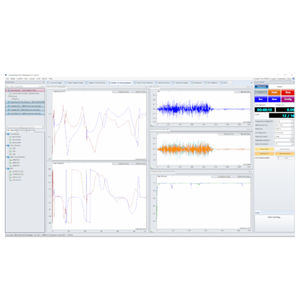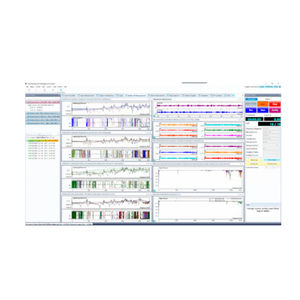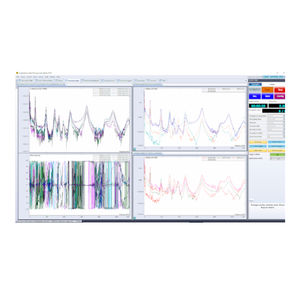
- Robotics - Automation - Industrial IT
- Industrial Software
- Control software
- CRYSTAL INSTRUMENTS

- Company
- Products
- Catalogs
- News & Trends
- Exhibitions
Test software controlcalculationfatigue damage spectrum



Add to favorites
Compare this product
Characteristics
- Function
- test, control, calculation, fatigue damage spectrum
Description
Accelerated vibration testing uses Fatigue Damage Spectrum (FDS) to compare the potential damage caused by different Random and Swept Sine profiles. In a similar fashion to Multi-Sine Control, FDS provides a way to reduce testing times by calculating the quickest path to destruction or damage. Testing times are accelerated by focusing random or swept sine energy, depending on the FDS calculation, to where it will induce the most fatigue.
Generate the random profile from time stream data recorded from accelerated vibration testing and view its Fatigue Damage Spectrum (FDS) to understand the potential damage. Users can adjust the profile to reduce testing time.
Max Number of Profile Points: 400
Display: APS and FDS
Options: low and high frequency at 1/24 octave max, target life and test duration.
The damage caused by accelerated vibration testing can originate from one of the following conditions:
Damage caused by an extreme instantaneous stress on an object
Damage caused by fatigue when high amount of a certain stress is applied to the object
FDS represents a spectrum with regard to the fatigue damage on an object. FDS function makes use of the S-N curve to construct the spectrum. The S-N curve represents the stress applied to a material (S) versus the number of cycles of applied stress. The S-N curve of aluminum is shown below:
The FDS function helps reduce testing time by calculating the quickest path to destruction or damage. Testing time is accelerated by concentrating the random or swept sine energy, depending on the FDS calculation, to where it will induce the most fatigue damage.
VIDEO
Catalogs
No catalogs are available for this product.
See all of CRYSTAL INSTRUMENTS‘s catalogsOther CRYSTAL INSTRUMENTS products
Environmental and Structural Testing
Related Searches
- Automation software solution
- Management software solution
- Analysis software solution
- Process software solution
- Computer-aided design software
- Windows software solution
- Control software solution
- Online software
- Real-time software solution
- Design software solution
- 3D software solution
- Monitoring software solution
- Interface software
- Measurement software
- Industrial software solution
- Quality software
- Visualization software solution
- Automated software
- Network software solution
- Machine software
*Prices are pre-tax. They exclude delivery charges and customs duties and do not include additional charges for installation or activation options. Prices are indicative only and may vary by country, with changes to the cost of raw materials and exchange rates.





























